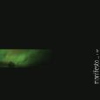 The brainchild of Uppsala, Sweden's M. Zetterberg, exemplifies the typical expansiveness, vastness of scale, and sheer coldness of most Scandinavian dark ambient/industrial output. Zetterberg, although in many ways staying within the somewhat narrow confines of the genre, also strays out of it occasionally, sometimes springing a surprise or two along the way. While Core won’t win any marks for originality, it is at the very least above average and steps outside of convention on one or two occasions to make it untypical of many entries in the field.
The brainchild of Uppsala, Sweden's M. Zetterberg, exemplifies the typical expansiveness, vastness of scale, and sheer coldness of most Scandinavian dark ambient/industrial output. Zetterberg, although in many ways staying within the somewhat narrow confines of the genre, also strays out of it occasionally, sometimes springing a surprise or two along the way. While Core won’t win any marks for originality, it is at the very least above average and steps outside of convention on one or two occasions to make it untypical of many entries in the field.
The tried and the tested prevails for the most part here, but that isn’t necessarily a bad thing. Deep rasping electronic bass drones, clean ringing tones, whistlings, howling winds, scratchings, and ‘cold’ shivering iciness each play their part, combining with treated instrumentation—such as zither and theremin—to create a distinctly menacing subterranean ambience. Its depiction of cold, freezing, and weighty isolation and despair is absolutely spot-on, even if it follows a species of prescription. Tracks such as “Core III,” for instance, descend into the freezingly cold and hellishly glacial depths, bringing to mind images of subterranean caverns of cyclopean proportions. Deep, sustained drones and eldritch winds crash and reverberate endlessly, superseded by sweetly crystalline tones and harmonies singing out from the darkness while crackliness spits, pops, and punctuates icily. Unfamiliar shapes, both real and imagined, loom out from the stifling gloom in vaguely discerned silhouette against an even darker background, threatening to overwhelm the nerves. Further fine-tuning the unsettling atmosphere are strange disembodied scratchings and scrapings, their cause unseen in the light-engulfing Stygian darkness.
Indeed the alarm spreads through the follow-on track, “Core IV,” with its strident bell-like klaxon warning tone keeping the nerves on edge, in anticipation perhaps of some catastrophe. Hugely tectonic clashings bear down from above, an avalanche of sound just waiting to bury beneath tons of ice and rock, snuffing out air and life. The weight is palpably oppressive, crushing in its potential to overwhelm. “Core V” continues that stifling bleakness, cold howling qlippothic winds barrelling through underground tunnels, tunnels denizened by the strange warbling of the troglodytic and chthonic.
So far, so conventional, one would suppose (and quite rightly so from my description thus far). However, to think along those lines though would be to do Manifesto a disservice. Principally what sets this apart is Zetterberg’s inclusion of a distinctly un-dark ambient instrument: the trumpet. On “Core I” South African trumpeter Alex van Heerden lends an utterly haunting bizarreness to a track that relies just as much on its sparseness as on the sounds themselves. The track is punctuated with stretches of deep silence in between rasping bass drones and the peals of high-pitched ringing and shimmering tones, and amidst this comes the mournful sound of the trumpet. On paper at least it would seem to be a non-starter, and it shouldn’t work; the fact that it does is both a surprise and a testament to van Heerden’s sympathetic interpretation. Furthermore it adds an intangibly eerie dimension to the track, and elevates it to the above average. Van Heerden also adds very subtle hints to “Core III,” much less noticeable perhaps, but its presence is just enough to introduce more of that indefinable otherworldly element.
Like intimated above, this won’t set the world alight; but in some ways that’s not what dark ambient as a genre is about. It’s about mood and feeling, and on that score this album succeeds admirably. It also accrues kudos simply because of bringing in a new element in the form of the trumpet, a hitherto unknown player in the oeuvre of dark ambient instrumentation, unless one counts Jon Hassell’s Fourth World material. I certainly enjoyed what Manifesto had to offer and it also offered a glimpse of what might be possible if dark ambient artists stepped out of genre boundaries once in a while.
samples:
Read More

